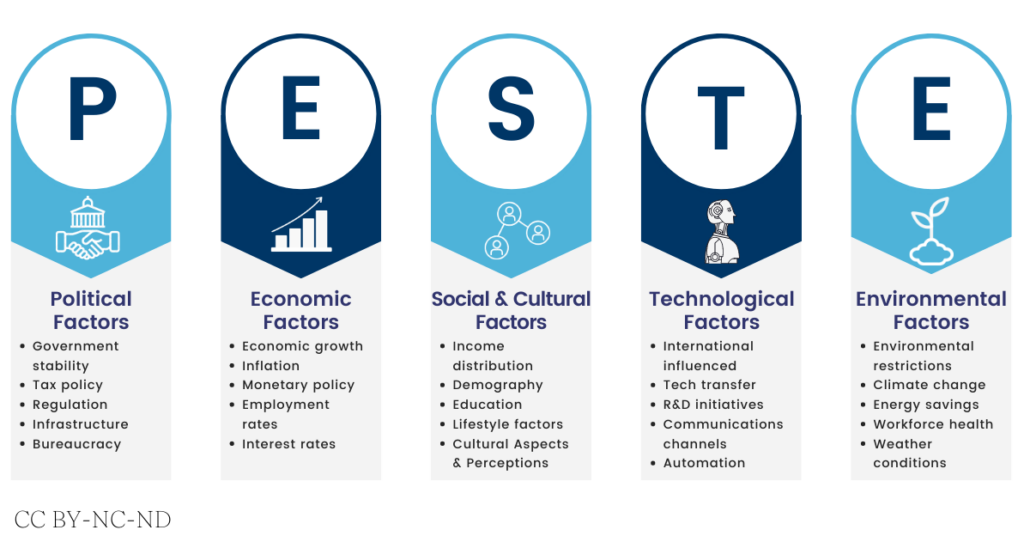Understanding the business environment
In the following video (duration 5:07 minutes) and from the text on this page you will learn about PESTE analysis.
Understanding the environment, a business operates in planning and decision-making. One useful tool for studying those external factors that affect an organization is PESTE analysis. It is a simple framework that facilitates an understanding of the wider business environment and encourages the development of external and strategic thinking. It can be used in a range of different scenarios and can help guide strategic decision-making as well as new product and service development.
PESTE stands for: Political, Economic, Social, Technological, and Environmental aspects.

POLITICAL: When looking at Political factors, you will need to consider national and global policies and political stability as well as local and regional government priorities and initiatives in your area.
ECONOMIC: Economic factors will include labor and energy costs, inflation, interest rates, and the cost of living.
SOCIAL: Social factors include population demographics, such as age and education as well as heritage and cultural norms.
TECHNOLOGY: Disruptive technologies such as smartphones, social media, automation, and the increasing shift towards artificial intelligence present both challenges and opportunities. How is your business responding to emerging technologies and innovation?
ENVIRONMENTAL: This covers weather and seasonal shifts connected to climate change alongside pollution, waste, and recycling. What impact does the business and its customers have on the environment? This area also covers some elements of corporate social responsibility.
A good PESTE analysis is based on relevant and reliable data. Literature reviews and statistics are an important part of this phase, but do not forget your own imagination. Using PESTE starts the process of identifying opportunities that the business can capitalize on as well as threats that can be assessed and lessened through actions taken.